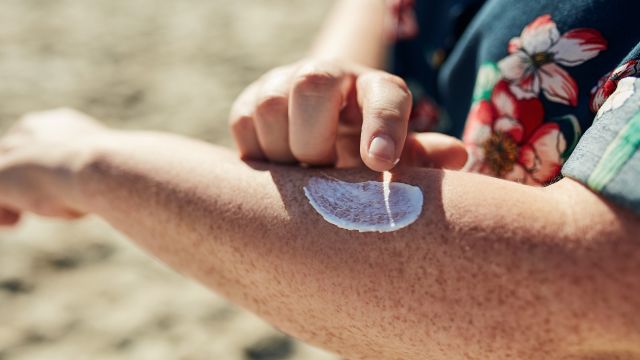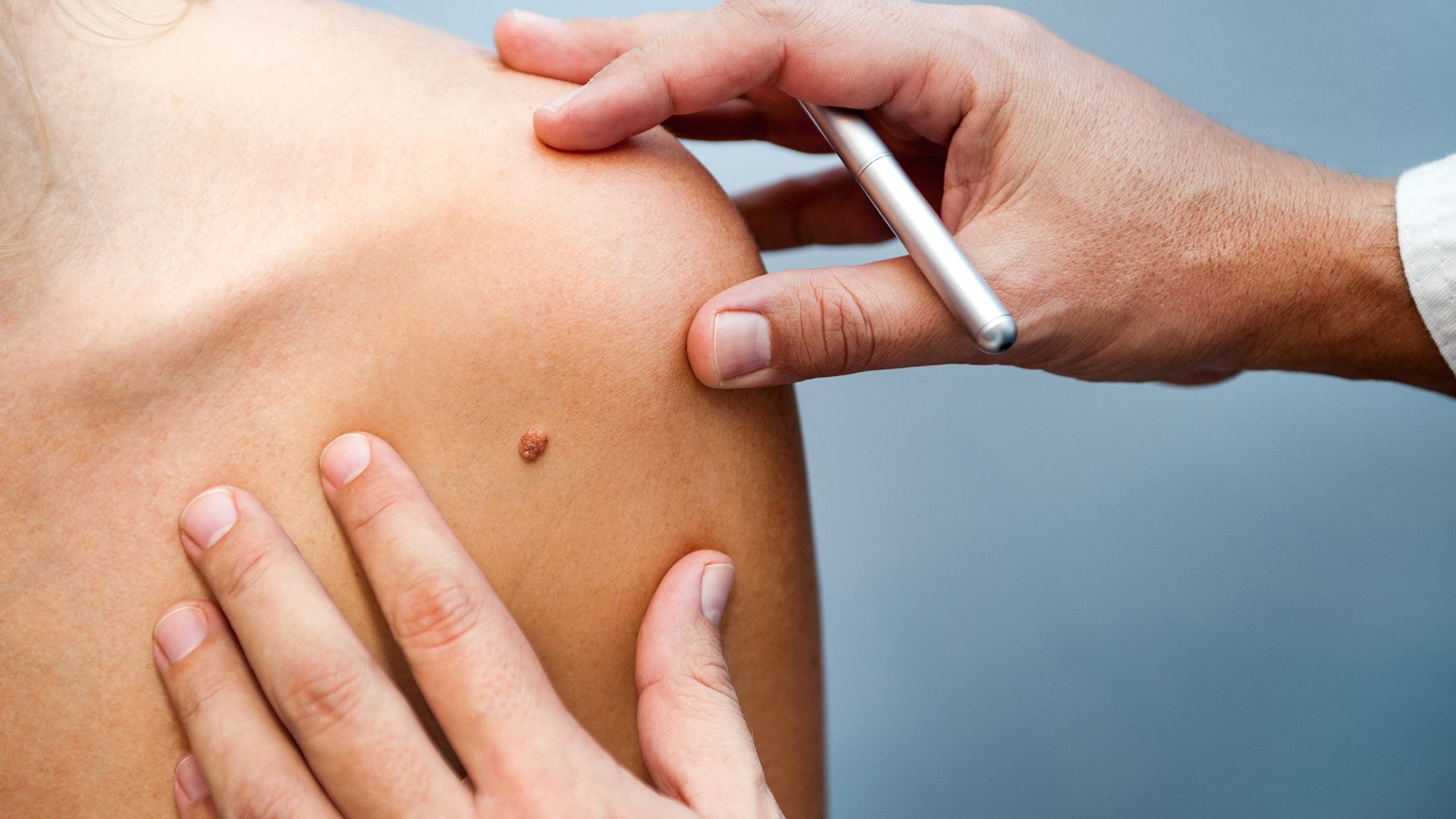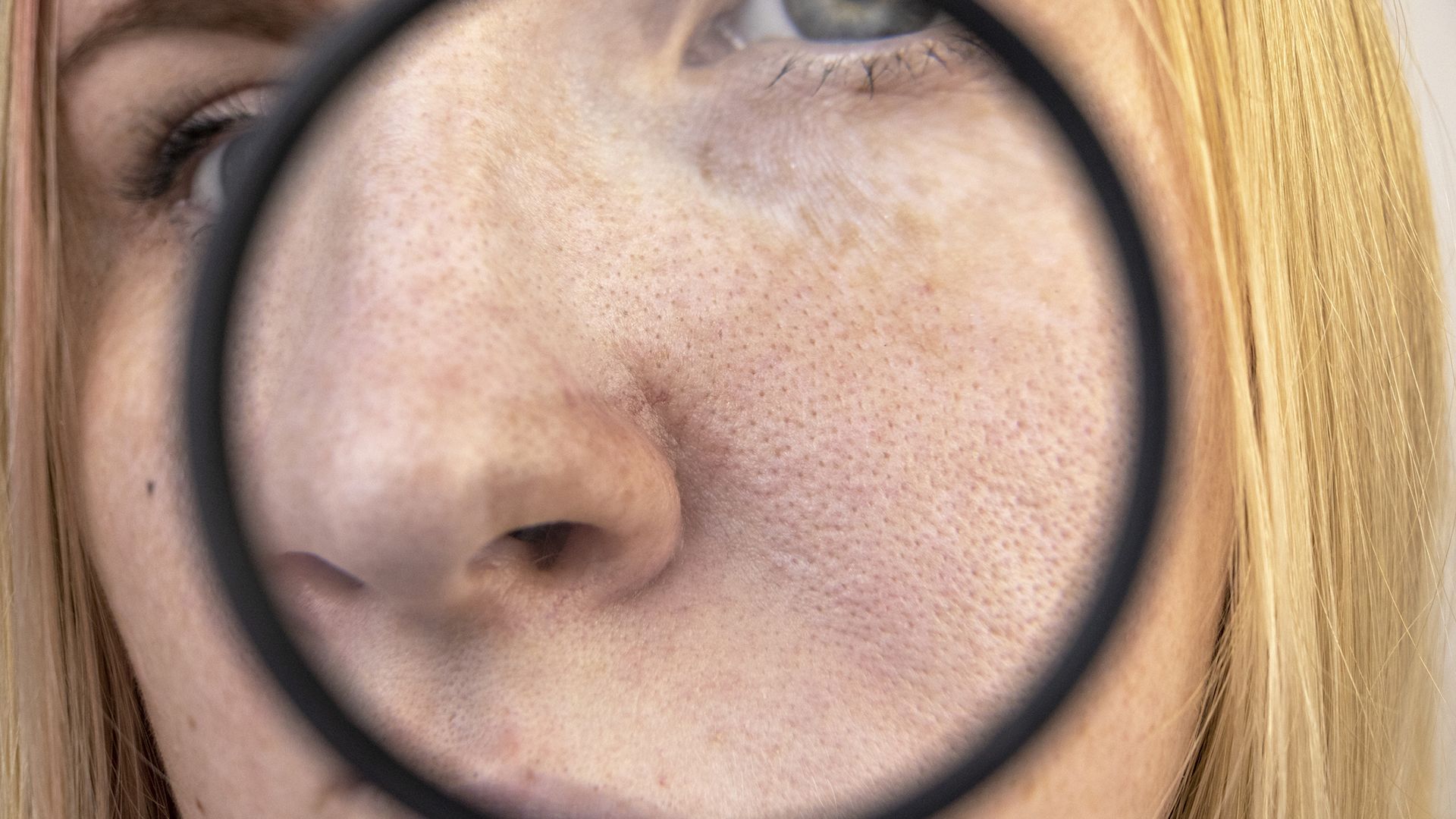Updated on April 22, 2025
Many people know to apply sunscreen when they’re at the beach or by a pool. But cancer research suggests that people in the United States may need to do more to protect their skin from harmful ultraviolet (UV) rays. Skin cancer is most often caused by too much exposure to these rays. They can come from the sun or from tanning beds and sunlamps.
Skin cancer is the most common form of cancer in the U.S., according to the Centers for Disease Control and Prevention. More than 5.4 million basal and squamous cell carcinomas—types of skin cancer—are diagnosed annually, the American Cancer Society has found. And rates of melanoma, the most serious form of skin cancer, have increased rapidly over the last 30 years, reports the American Academy of Dermatology (AAD).
Types of skin cancer
The different types of skin cancer are based on where the cancer begins. Most start in the skin’s top layer, called the epidermis. The following are the three most common types of skin cancer.
Basal cell carcinoma
The most frequently occurring type of skin cancer, basal cell carcinoma is an abnormal, uncontrolled growth of cells in the lower part of your epidermis, called the basal cell layer. Basal cell carcinoma may look like open sores, shiny bumps, or scars. On people with fairer skin, it may appear as red patches or pink growths, and on people with more pigmented skin, it could look like brown, tan, or black bumps. It’s usually caused by repeated, unprotected UV exposure. Basal cell carcinoma grows slowly and rarely spreads beyond the original skin site.
Squamous cell carcinoma
Squamous cell carcinoma is an uncontrolled growth of abnormal cells in the squamous cells, which are flat cells in the upper part of the epidermis. Squamous cell carcinoma growths often look like scaly patches that may bleed or crust, open sores, warts, raised patches, or nodules (firm bumps) that may be brown, black, red, or pink, depending on skin color. It's mainly caused by UV exposure over the course of a person's lifetime.
Melanoma
Melanoma skin cancer develops when UV rays from the sun or tanning beds trigger mutations in the skin cells. This causes the cells to multiply rapidly and form malignant tumors. The majority of melanomas are black or brown, but they can also be skin-colored, pink, red, purple, blue, or white.
Risk factors for skin cancer
Anyone can develop skin cancer. Your skin type is a key factor in determining your risk. Higher risk is linked to fair skin, skin that gets painful when exposed to sun, and skin that becomes red, burns, or develops freckles easily. This means you have less pigment to protect your skin from UVR exposure. If you have dark or olive skin, you have more pigmentation and therefore more natural protection.
Other risk factors for skin cancer include:
- Having one or more severe sunburns as a child
- Many moles of certain types
- A personal or family history of skin cancer
- Exposure to UV rays, including rays emitted by tanning beds
Skin cancer prevention tips
There are a number of ways to reduce your risk for developing skin cancer. Start by applying a waterproof broad-spectrum UVA/UVB sunscreen with an SPF of 30 or higher to exposed skin every day of the year to protect against the sun’s UV rays. Be sure to follow the instructions when applying your sunscreen and reapply as directed.
"You need to make applying sunscreen part of your daily routine," advises Gary Marder, DO, a cosmetic dermatologist based in Port St. Lucie and Okeechobee, Florida. "Always wear a broad protection sunscreen…whenever you're going to be outside—driving, walking, biking, running, golfing, going to a park—especially if you live in a sunny area. It's especially important to cover areas that are often overlooked—your lips, nose, feet, hands, forearms, and any exposed areas of the scalp."
Aside from sunscreen, wearing protective clothing such as wide-brimmed hats and UV-blocking sunglasses can reduce your exposure to the sun’s rays. It’s also wise to avoid being in the direct sun for more than a few minutes, especially between 10 a.m. and 4 p.m., when rays are strongest. Staying in the shade during these hours can help you avoid burning. This is important because having five or more sunburns doubles your lifetime risk for developing melanoma.
In addition, avoid indoor tanning beds because they expose you to high levels of UV rays. Research has shown that using a tanning bed or booth significantly raises the risk of both basal and squamous cell carcinoma, as well as melanoma.
Examining your skin
Healthcare providers (HCPs) typically recommend checking your skin from head to toe once a month for signs of cancer. The ABCDE method can help you look for certain features that could indicate the disease is present:
- Asymmetry: Look for a skin spot or mole that looks different on one side than on the other.
- Border: See if the outline of the spot or mole is irregularly shaped (with uneven edges).
- Color: Notice if there are different colors or shades within one spot or mole.
- Diameter: Measure the spot or mole beside a pencil eraser to see if it’s bigger.
- Evolving: Notice if the color, shape, or size of the spot or mole is changing over time or if it doesn’t look like your other skin spots.
Contact your HCP right away if you have a spot or mole with any of these features. Also reach out promptly if you develop (or have) a spot, sore, skin growth, mole, beauty mark, or brown spot that does one or more of the following:
- Continues to itch, hurt, crust, scab, erode, or bleed
- Does not heal within two weeks
- Changes color or appears pearly, translucent, tan, brown, black, or multicolored
- Changes in texture
- Increases in size or thickness
- Is asymmetrical
- Is irregular in outline or border
- Is bigger than 6 millimeters, the size of a pencil eraser (though melanomas may be smaller than this)
It’s also important to speak with your HCP about your medical history and risk factors for developing skin cancer. That way, they can make any necessary skin screening recommendations for you.






